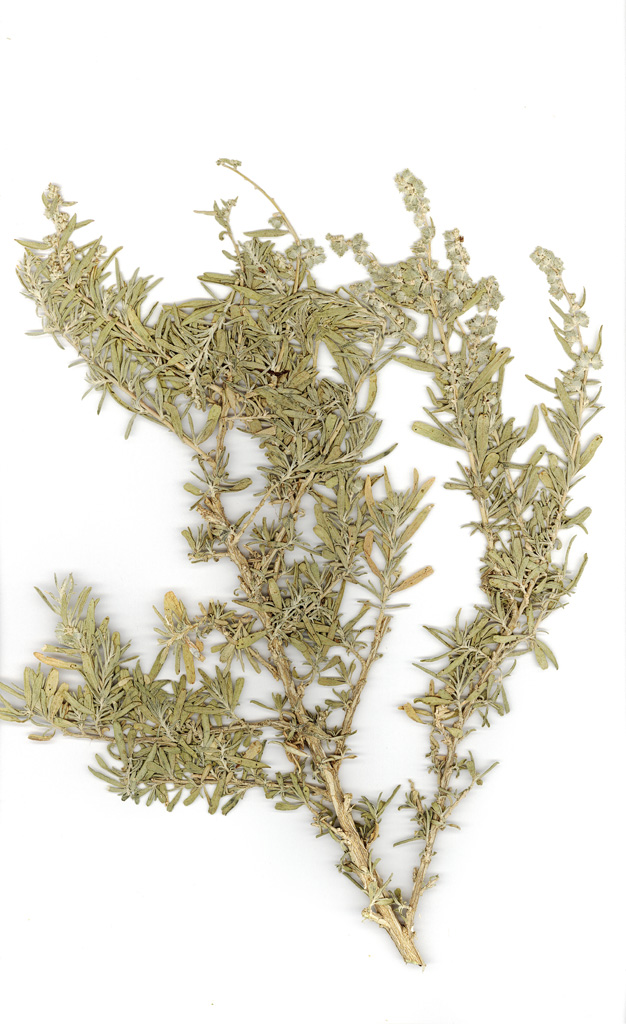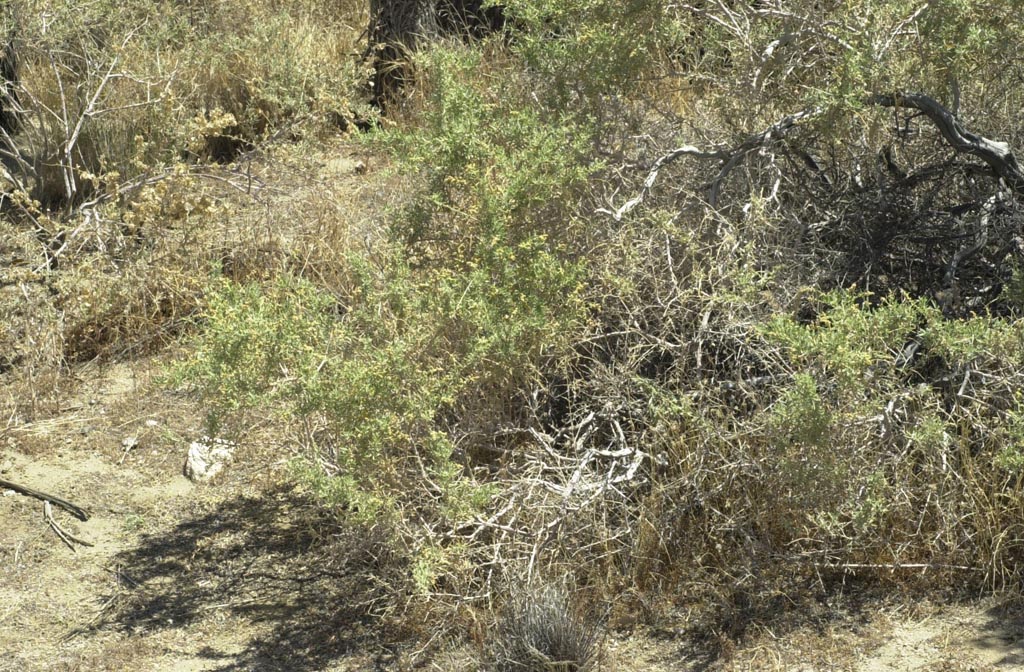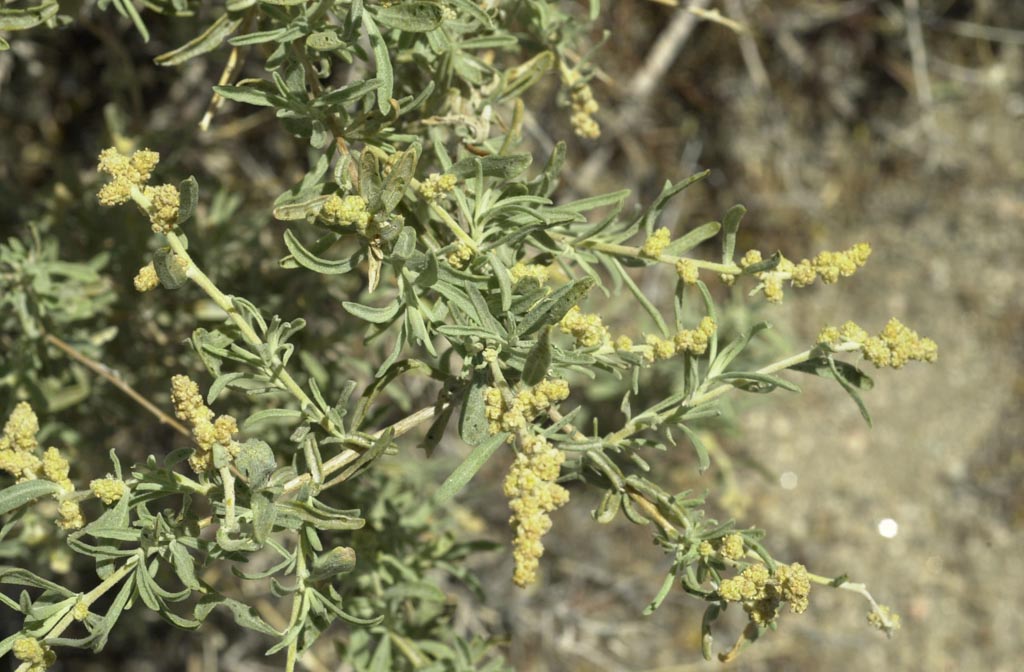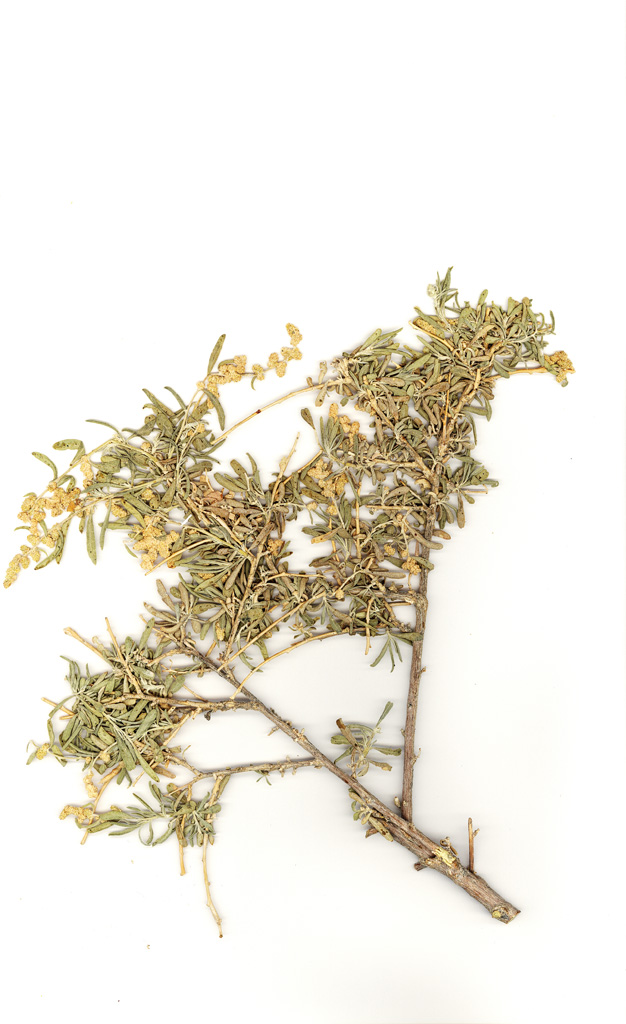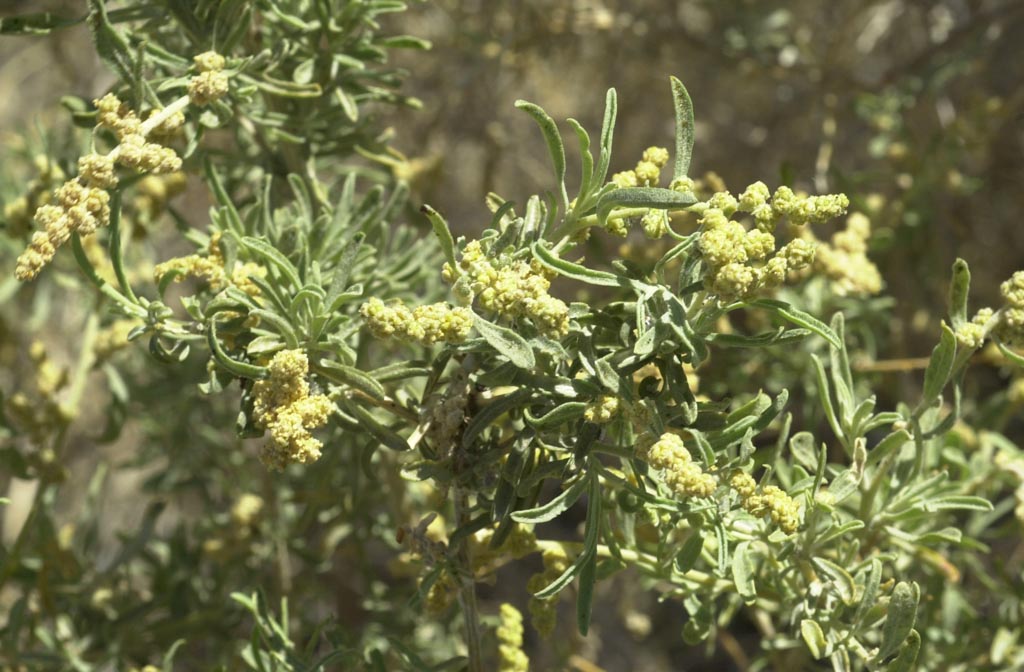61.
Atriplex canescens
(Pursh) Nuttall, Gen. N. Amer. Pl. 1: 197. 1818.
Four-wing saltbush
Calligonum
canescens
Pursh, Fl. Amer Sept. 2: 370. 1814;
Atriplex nuttallii
S. Watson
Shrubs,
dioecious or rarely monoecious, mainly 8-20 dm, as wide or wider, not especially armed.
Leaves
persistent, alternate, sessile or nearly so, blade linear to oblanceolate, oblong, or obovate, mainly 10-40 × 3-8 mm, margin entire, apex retuse to obtuse.
Staminate flowers
yellow (rarely brown), in clusters 2-3 mm wide, borne in panicles 3-15 cm.
Pistillate flowers
borne in panicles 5-40 cm.
Fruiting bracteoles
8-25 mm, as wide, on stipes 1-8 mm, with 4 prominent wings extending the bract length, united throughout, wings dentate to entire, apex toothed, surface of wings and body smooth or reticulate.
Seeds
1.5-2.5 mm wide.
2
n
= 18, 36+.
This species forms hybrids with
Atriplex confertifolia
and
A
.
gardneri
varieties (see var.
bonnevillensis
). Materials from the vicinity of the type locality of the species in South Dakota are low subherbaceous plants that differ from our shrubby tall material. However, the type area is presently covered with water from a dam on the Missouri River, and it is not possible to exclude the possibility of
A. canescens
as it has been interpreted for the past century to have existed at that site during the Lewis and Clark Expedition, if that is indeed where the lectotype was collected.
Varieties 4 (4 in the flora): w North America, Mexico.
Nuttall's new combination
Atriplex canescens
was based on
Calligonum canescens
Pursh. Watson based his new name
A. nuttallii
directly on
A. canescens
Nuttall, i.e., including the citation of Nuttall's "Genera, 1. 197," and on its basionym,
C. canescens
. The name
A. nuttallii
is thus a nomenclatural synonym of
A. canescens
and was thus illegitimate at its inception. It cannot be resurrected by even the most sophisticated arguments. A sheet of
Atriplex canescens
, noted as "a shrub," taken by Nuttall on the 1810 Missouri River expedition is extant in the Lambert herbarium (PH). It bears several, obviously shrubby, staminate flowering branches, but the only pistillate branch is very immature. The name
A. gardneri
, also cited provisionally by Watson within the concept of
A. nuttallii
, clearly has priority over other names for that widely distributed species complex. Attempts at leptotypification of the name
nuttallii
by J. McNeill et al. (1983) and H. C. Stutz and S. C. Sanderson (1998) are both superfluous, the name being illegitimate.
C. A. Hanson (1962) noted the similarity between the occasional wingless fruiting bracteoles of
Atriplex canescens
and
A. gardneri
var.
falcata
. He noted further that the bracts of both species lack lateral teeth subtending the terminal ones, have terminal teeth united half their length, and have indurate bracts. Whether such similarity indicates relationship or mere coincidence is open to question. However,
A. canescens
is known to form hybrids with most, if not all, portions of the
gardneri
complex and with other woody species whose range it overlaps as well.
SELECTED REFERENCE
Stutz, H. C. and S. C. Sanderson. 1979. The role of polyploidy in the evolution of
Atriplex canescens
. In: J. R. Goodin and D. K. Northington, eds. 1929. Arid Plant Resources.... Lubbock. Pp. 615-621.
